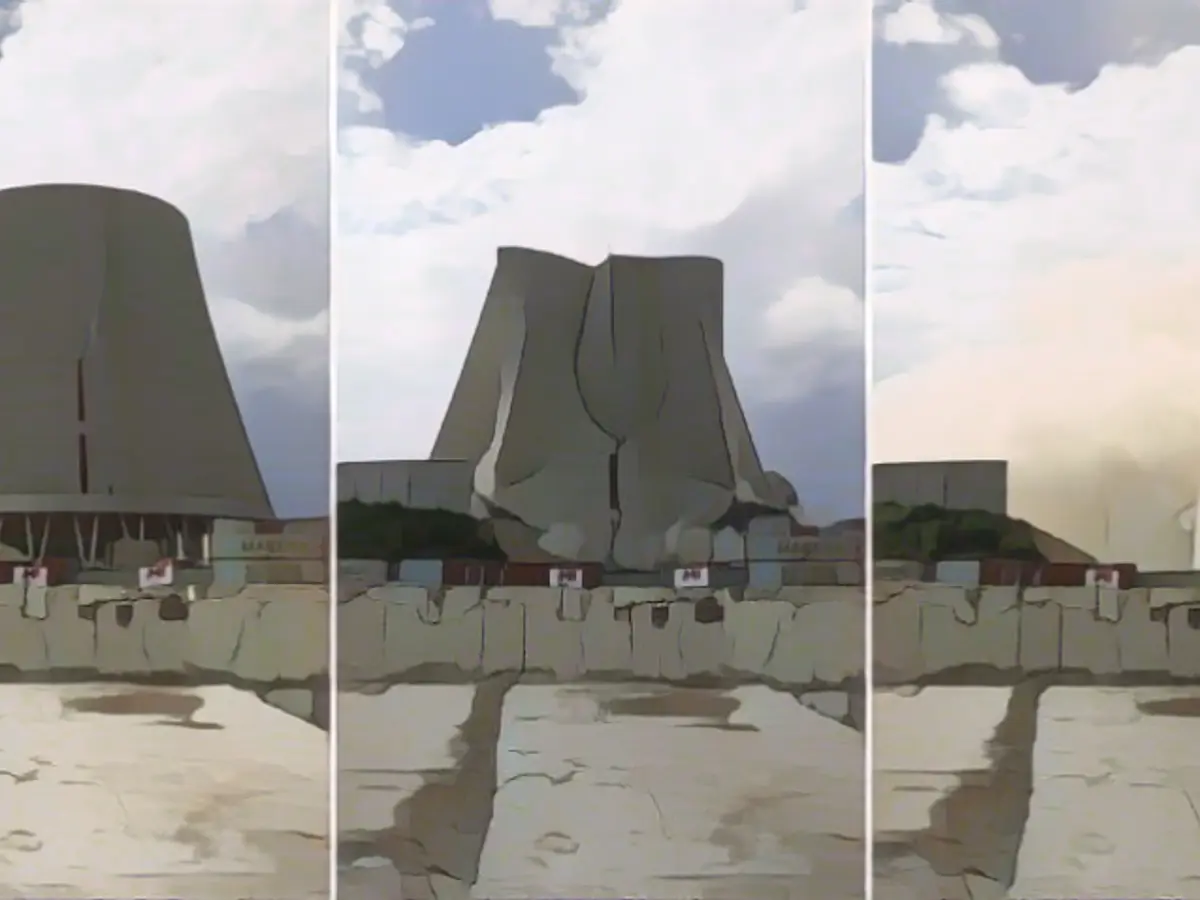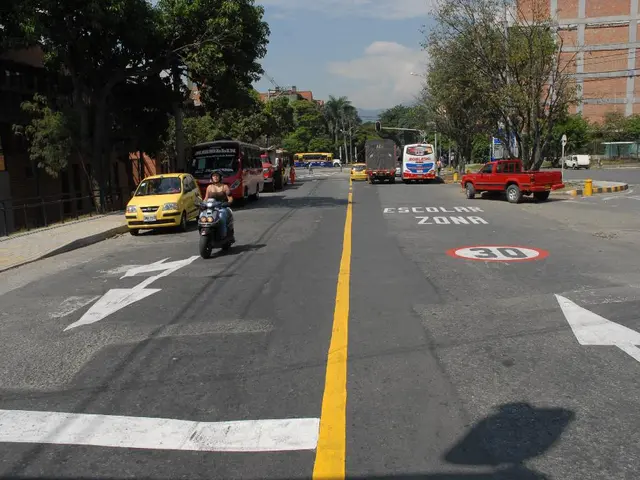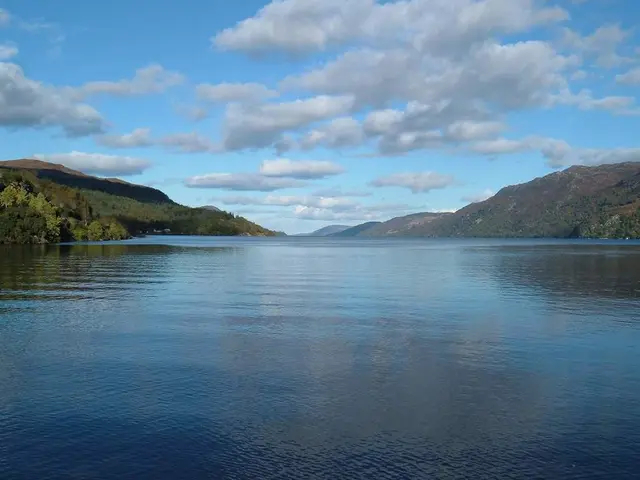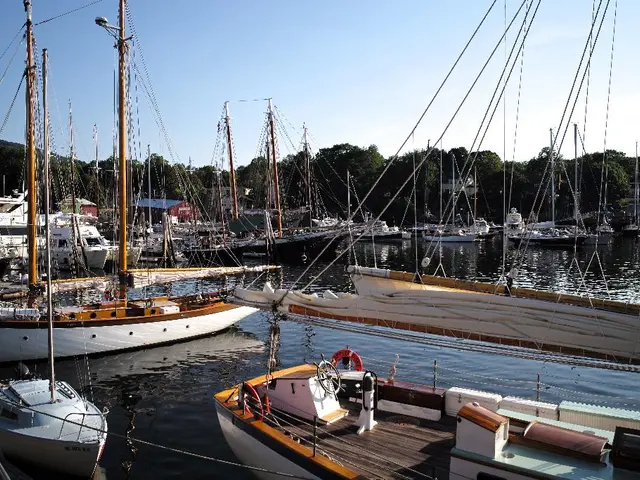The eternal question: Where to store our growing mountain of dangerous nuclear waste remains unanswered
As nuclear power gains momentum as a quick, low-carbon solution, one issue remains a decades-long conundrum: where to store the hundreds of thousands of tons of highly radioactive spent fuel elements?
Proposals are abundant, from blasting it into space, hiding it between tectonic plates, or burying it deep beneath the earth on remote islands. Despite these efforts, safe, long-term, and cost-effective disposal methods have yet to be found.
While emerging nations like Poland, Egypt, Bangladesh, and Indonesia prepare to start their nuclear programs (allegedly a low-carbon energy source that could reduce emissions), all nations battling nuclear energy face the same daunting predicament.
Determined efforts to find a nuclear cemetery have so far proven fruitless - and a solution is nowhere in sight. Meanwhile, the pile of hazardous waste continues to grow - a dangerous byproduct of plutonium and uranium used in nuclear power and weapons production.
Germany will shut its last nuclear power plant by the end of this year. In contrast, France has just announced an unprecedented expansion of its already massive nuclear fleet. The United States continues to rely on nuclear energy to contribute to its climate goals.
The majority of nations store their hazardous waste in water tanks at provisional sites, often near nuclear power plants and military bases, provoking the ire of residents uneasy about hosting such waste. Radioactive material, still active internally for thousands of years, continues to pose health, safety, and proliferation risks.
Both advocates and critics of nuclear power agree that these temporary solutions are not acceptable. We cannot burden future generations with this toxic legacy and the additional health, safety, and proliferation risks associated with radioactive waste.
At present, Finnish geological disposal is presented as the least troubling option among the proposed solutions. However, the Finish claims of finally solving the problem are marred by uncertainty.
In the coming summer in a sparsely populated Baltic Sea island, the first of hundreds of closed containers with volcanic clay and copper-lined spent nuclear fuel will be lowered into a 500m-deep granite vault. Sealed with cement - not for a million years, but for approximately a hundred thousand years.
This geological grave is an interim solution, not a permanent one. Andrew Blowers, nuclear waste expert, author of The Nuclear Power Legacy, and former member of the British Radioactive Waste Management Council, states, "Currently, there are no plans to separate the waste from nuclear power." For thousands of years. "
Copper and cement eventually corrode and disintegrate, while the radioactive waste remains toxic and hazardous for thousands of years. Some experts argue that the risk of leaks and contamination is even higher than the Finnish authorities admit.
Additionally, geological shifts, earthquakes, or other drastic changes in conditions may release dangerous elements. On top of that, the cost: Finland will spend €3.5 billion (US$3.9 billion) on the project to store 6,500 tons - their own spent fuel - over the next 100 years.
Other countries, including the United States, United Kingdom, and Sweden, have announced plans to bury nuclear waste in similar vaults. Yet, even in unique geological conditions, opposition always emerges. No one wants toxic waste near their families.
Therefore, a seemingly appealing alternative - technological burial - gains appeal. The concept involves vertically dropping nuclear waste into the Earth's core, where it would essentially drift on a geological plate in the trench between neighboring plates that sinks deeper into the Earth.
However, top geologists scoff at the concept: the movement of the tectonic plates is too slow, the amount of nuclear waste is too large, and the risk of underground volcanoes or earthquakes releasing the waste back into the sea remains.
Moreover, launching nuclear waste into space is impossible. Threats of a rocket crash, space debris, and astronomical costs prevent the execution of this strategy.
The ongoing search and high costs of this "solution" itself make the case for why we no longer want to deal with this dangerous waste. At least in Finland, the nuclear industry bears the costs. According to the Finns, the disposal of the entire current world's nuclear waste would total €135 billion (US$153 billion) and cost an additional €6 billion (US$6.8 billion) annually to reach the estimated 10,500-ton production rate.
Since no long-term safe storage option is in sight, Blowers states, "general storage of spent fuel on site is likely to last several generations, at least until mid- to late in the next century. If the amount of waste increases, we must adapt." To more complex, difficult management challenges."
[1] Dosé, M. (2019). Nuclear Waste Management: A Systematic Approach to Problems and Solutions (2nd ed.). Wiley-Blackwell.
[2] Fechner, M.M., Rülicke, A., & Schäfer, H. (2017). Sustainable use of nuclear technology: Opportunities and challenges. Accessed from https:///doi.org/10.1080/11054481.2017.1289534
[3] International Atomic Energy Agency (2017). Geological Disposal of Radioactive Waste. Vienna: IAEA.
[4] Nuclear Regulatory Commission (2012). Waste Confidence Report. Accessed from https:///www.nrc.gov/waste/spent-fuel/default.html
Still Elusive: A Secure, Long-Term, & Cost-Efficient Solution for Nuclear Waste Disposal
The question of where to store potentially hazardous and radioactive nuclear waste continues to vex the world's scientists. In many ways, nuclear power has emerged as a viable, low-carbon alternative to conventional energy sources. However, the challenge of long-term nuclear waste storage persists as an obstacle.
While emerging countries like Poland, Egypt, Bangladesh, and Indonesia prepare to start their nuclear program operations (allegedly a low-carbon energy source that could reduce emissions), all nations using nuclear power struggle with the same daunting issue.
The global nuclear waste inventory currently stands at approximately 370,000 tons. Experts predict this figure will double to 1.1 million tons within the next century. To manage this escalating problem, scientists and policymakers around the world have proposed various solutions that might be viable.
One popular proposal involves geological disposal, or the deep burial of nuclear waste to ensure long-term isolation from the environment. This technique is already in use in Sweden and Finland, with Finland planning to entomb up to 6,500 tons of its own waste inside a 500m-deep granite vault by 2030.
However, geological disposal is not without its challenges. Corrosion, material degradation, and geological instability present significant risks that must be addressed. Moreover, the high cost of geological disposal — estimated at €135 billion (US$153 billion) — leaves many wondering if other alternatives may be more feasible.
Another proposed solution is the reprocessing of spent fuel, which separates valuable materials like uranium and plutonium, making it easier to store and manage. While this approach has been employed in some countries, such as France and Japan, it has its own set of drawbacks.
Reprocessing requires specialized infrastructure and technology, and the resulting materials can be highly radioactive and challenging to construct and operate. In addition, the process raises safety and proliferation concerns, as well as potential environmental contamination risks.
Some researchers have suggested alternative approaches to nuclear waste storage, such as transmutation, which uses particle accelerators to convert radioactive waste into more stable forms. While transmutation holds promising potential for reducing the long-term hazards associated with nuclear waste, it remains an experimental technology with significant technical challenges and high costs.
Another promising but technologically challenging solution involves thermal treatment, which melts spent fuel and separates the fission products and waste materials for easier storage and disposal. Additionally, thermal treatment could potentially extract valuable materials for further use.
Despite the numerous challenges and competing solutions for nuclear waste storage, one thing is clear: the world needs to find a long-term, secure, and environmentally responsible solution to this growing dilemma.
The complexities of nuclear waste storage are significant, and there is no easy answer. However, with continued research and innovation, as well as open dialogue between policymakers and stakeholders, it is possible to overcome these challenges and create a more sustainable and secure future for our planet.







